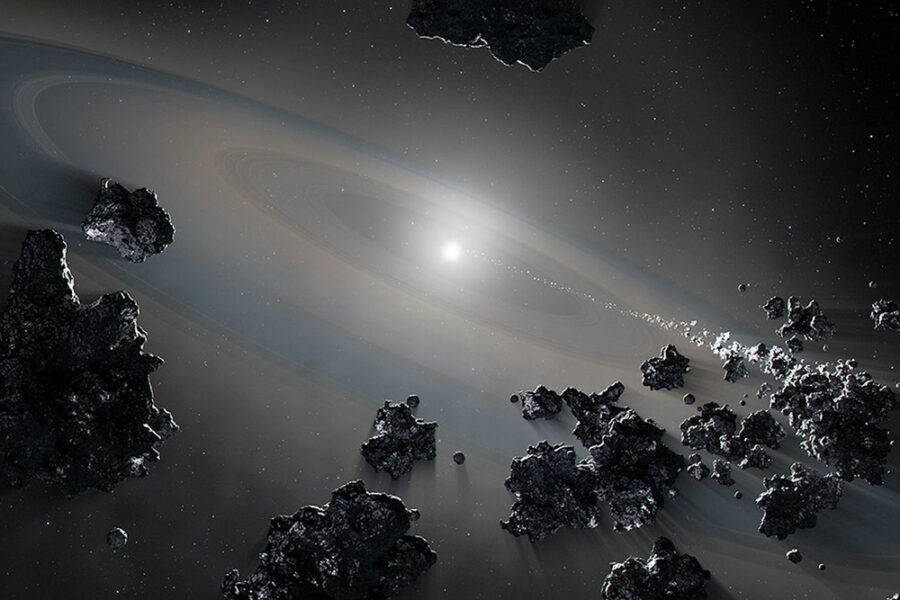New observations show that both rocky and icy worlds fell onto a white dwarf, indicating past orbital chaos in the system.

NASA / ESA / Joseph Olmsted (STScI)
What’s stranger than stones raining down onto a hot white dwarf star? Adding chunks of ice to the mix.
G238-44, a puny white dwarf at a distance of 86 light-years, is accreting two very different kind of objects simultaneously, Ted Johnson (University of California, Los Angeles) told the 240th meeting of the American Astronomical Society in Pasadena, California, on Wednesday. “This has never been observed before,” he says.
White dwarfs are the compact remains of low-mass stars that first balloon into red giants — a fate that awaits our own Sun some 5 billion years from now. The red giant phase wreaks havoc with orderly planetary systems. Close-in planets may be devoured, while the orbits of more distant worlds become jumbled.
After the giant star blows away its outer layers into a planetary nebula, a roughly Earth-size (but still solar mass) white dwarf remains. Observations of many white dwarfs show signs of atmospheric “pollution”: unexpected amounts of elements heavier than helium. Their existence indicates that when collisions disrupt the orbits of asteroid-like bodies in the white dwarf system, their rocky debris rains down onto the star.
So what’s so strange about G238-44? It’s the chemical composition of the pollution on its surface, as measured by NASA’s Far Ultraviolet Spectroscopic Explorer (FUSE), the Keck Telescope in Hawai’i, and the Hubble Space Telescope. The relative abundances of 10 heavy elements (carbon, nitrogen, oxygen, magnesium, aluminum, silicon, phosphorus, sulfur, calcium, and iron) don’t match the composition of any known solar system object.
According to Johnson, the material falling down onto the white dwarf is best described as almost two parts Mercury-like debris — typical rocky stuff — and one part material that's similar to the icy Kuiper Belt objects in the outskirts of the solar system. The findings suggest that the star’s planetary system experienced a huge amount of orbital chaos, which would have flung remote icy bodies inward.
Dennis Bodewits (Auburn University), who was not involved in the study, is intrigued by the result. “This is the only way to study the interior composition of small bodies in other solar systems, so that is cool,” he says. “However, I don’t like complicated solutions – maybe the observations can be explained by one disintegrated object after all, containing both metal, rock, and ice, like the dwarf planet Ceres.”
In a similar vein, Nick Cowan (McGill University) wonders whether the object could have been a water-rich super-Earth or a gaseous mini-Neptune. These two planet types are absent in our own solar system but abundant elsewhere in the universe.
But Johnson claims there’s just no way to end up with the observed relative amounts of iron, oxygen, carbon and nitrogen in a single body.
Moreover, UCLA astronomer and team member Ben Zuckerman explains that the amount of pollution is too small to come from the disruption of a planet. The total mass of measured heavy elements is way less than Earth’s mass, Zuckerman says, and the lack of an excess of infrared radiation around the white dwarf indicates that there’s not a huge amount of circumstellar material left.
With just one white dwarf showing “strange abundances,” as Johnson calls it, it’s difficult to draw definitive conclusions. Future observations may yield additional cases. “It’s an interesting find,” says Bodewits, “but I wish there were more.”
 0
0









Comments
You must be logged in to post a comment.